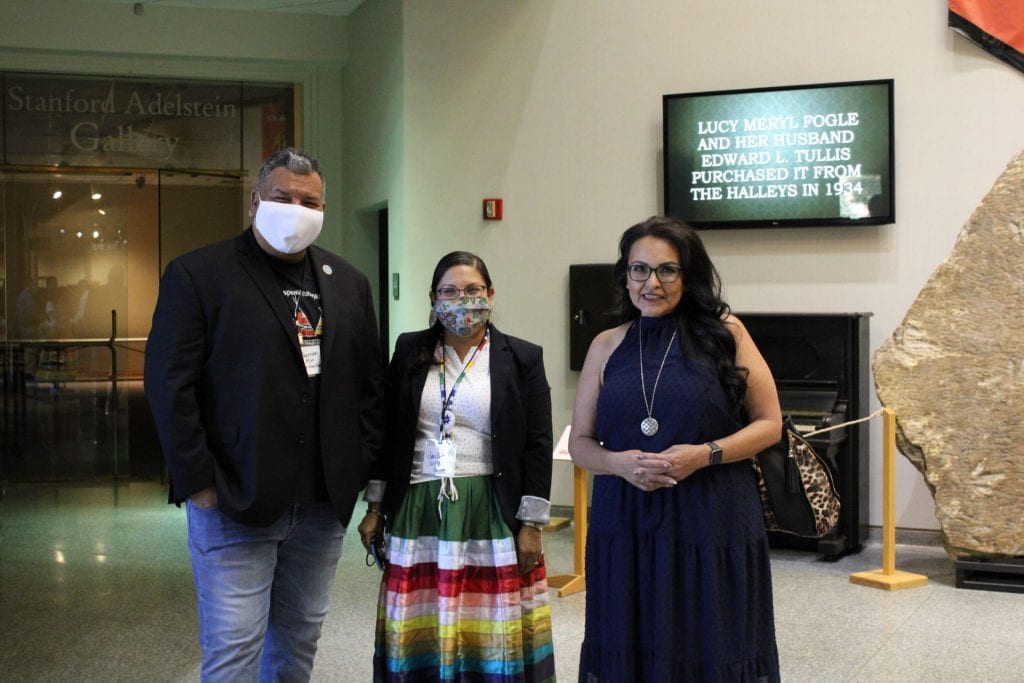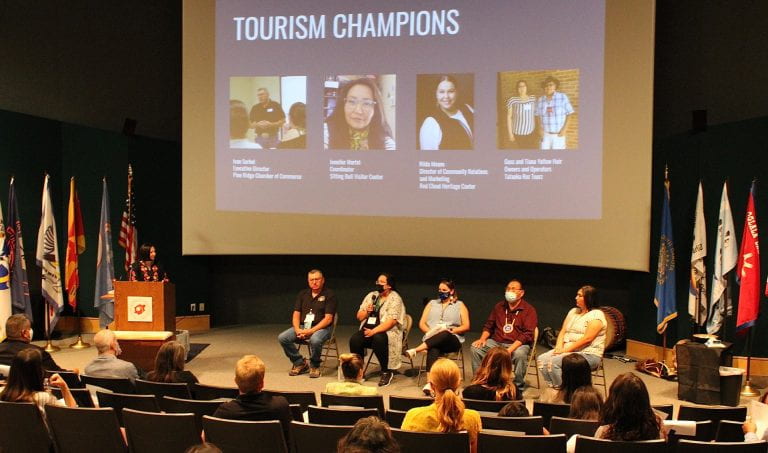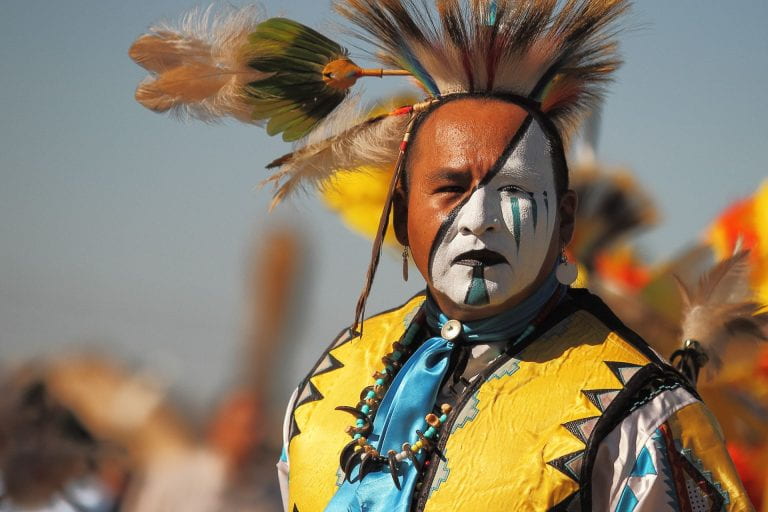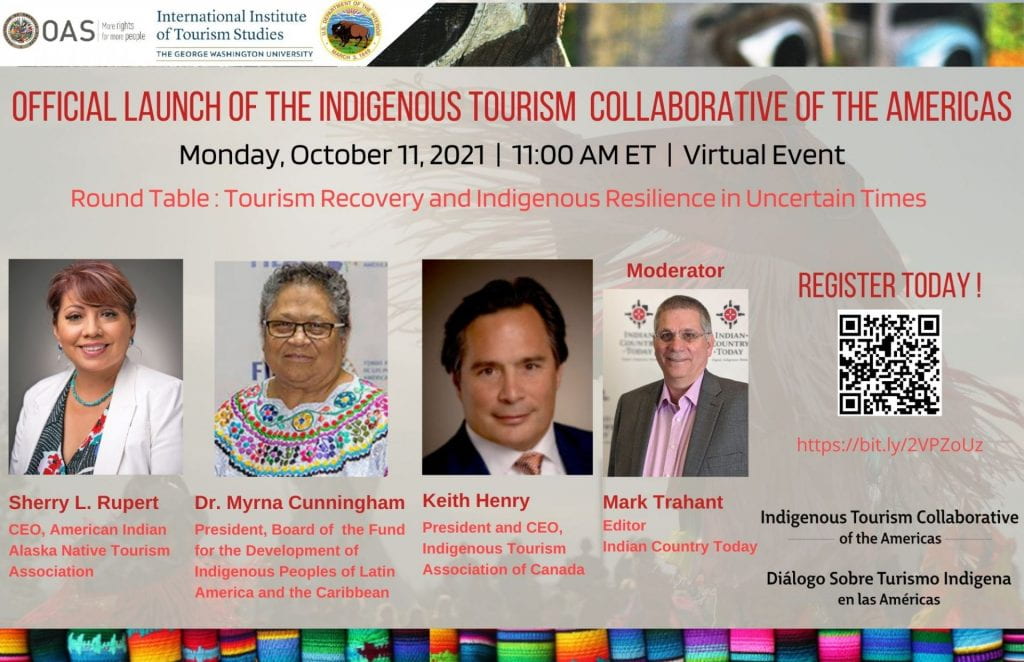Efforts are underway to ensure the inclusion of Native American communities in South Dakota tourism through the launch of the Native American Tourism Development and Management Plan, 2020-2025, South Dakota. This is one of the first initiatives of its kind under the Native American Tourism and Improving Visitor Experience (NATIVE) Act and was unveiled at an event held on August 26, 2021, at the Journey Museum in Rapid City, South Dakota.
In her virtual address to the audience, Denise Edwards, Acting Director of the Office of Indian Economic Development, commended the group’s efforts. “One fact stands out: none of the progress would be happening without the commitment to do the work and to do the work together,” she said. “The South Dakota Native Tourism Alliance is one of the first in the nation to attract these funds and begin the South Dakota tourism development journey. What this group is pursuing is groundbreaking. Now the plan is made, tribally-driven tourism success is on the horizon.”

Denise Edwards, Acting Director of the Office of Indian Economic Development
Under the new plan, the first alliance of its kind brings together nine federally-recognized tribal nations in South Dakota to form the South Dakota Native Tourism Alliance (SDNTA), a network of more than sixty organizations and local, state, and federal partners, working together to develop Native American tourism as a catalyst for economic growth. This tourism development initiative has been steered by the George Washington University International Institute of Tourism Studies in partnership with its South Dakota and federal agency partners including the Office of Indian Economic Development, U.S. Department of the Interior.
At the event, more than 100 stakeholders, including tribal leaders and tourism industry champions, celebrated the journey to date alongside presentations of tourism tactics which will be rolled out throughout the region over the next few months.
Tribal Nations in South Dakota are stewards of a diverse array of natural and cultural resources that offer untapped possibilities for tourism. However, these communities remain hidden gems despite the many recreational opportunities available—outdoor activities including hunting and fishing, rich cultural and sporting events such as wacipis, rodeos and fairs, and gaming opportunities.
“I think the South Dakota Native Tourism Alliance is a potential revenue source for our tribes, and it’s a way for our tribes to generate income, alleviate poverty, and help us to conserve our natural resources and culture,” said Dew Bad Warrior-Ganje, a member of the Cheyenne River Sioux Tribe and vice president of the Black Hills Pow Wow, who has been working closely with the GWU IITS team over the last three years.
 (Left) Ira Taken Alive, Vice-Chairman, Standing Rock Sioux Tribe; (Center) Dew Bad Warrior, Event Coordinator and Vice President, Black Hills Powwow Association; (Right) Representative Tamara St. John, Event MC and District 1 Representative, South Dakota House of Representatives, Sisseton-Wahpeton Oyate
(Left) Ira Taken Alive, Vice-Chairman, Standing Rock Sioux Tribe; (Center) Dew Bad Warrior, Event Coordinator and Vice President, Black Hills Powwow Association; (Right) Representative Tamara St. John, Event MC and District 1 Representative, South Dakota House of Representatives, Sisseton-Wahpeton Oyate
By 2025, the SDNTA envisions Tribal Nations actively working with industry, state, and federal partners to develop Native American tourism experiences that are attracting visitors, encouraging them to stay and experience more in Tribal Nations, and ultimately bolstering local economies and the well-being of Native American communities.
The path forward for this initiative is for the SDNTA to implement the NATDMP with support from Tribal Nation Leadership, GW, the South Dakota Department of Tourism, and a range of industry partners across the state. SDNTA members hope this initiative can be a vehicle for the Oceti Sakowin (the Seven Council Fires) Oyate to enhance economic development through responsible tourism that promotes and maintains Lakota, Dakota, and Nakota values. “The idea is really that the tribal nations are working together to attract tourists and not going at it alone. Ensuring that there is this cross-cultural bridge occurring, and education occurring in tourism, along these trails and byways,” said Seleni Matus, director of the International Institute of Tourism Studies at George Washington University.



